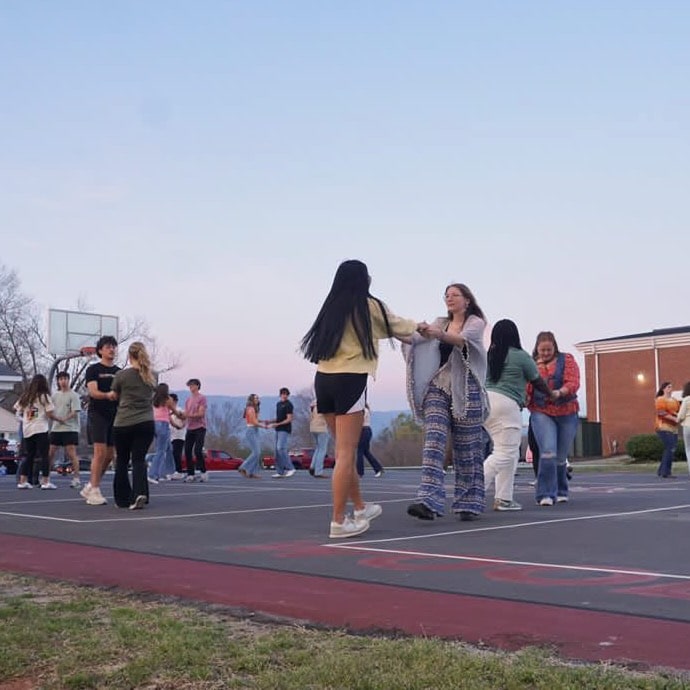
The basics of swing dancing
Samantha Meyeres, Staff Writer
Swing dancing made its entrance in the 1920s but has since stepped, swung and spun its way through the hearts of the youth for over a century. Today the dance reigns everywhere from dance halls to wedding receptions to university campuses.
This social style of dance starts with a basic foundation of steps that eventually lead to a variation of different twists, turns and dips.
Before getting into the different steps of swing dancing, it is important to point out that there are many different types of the dance, the main two being West Coast and East Coast Swing.
West Coast Swing, also called “slot,” is a smoother, slower and more connected dance that moves in a linear direction across the dance floor. According to West Coast Swing Online, this type of swing dance puts a strong emphasis on connection with your partner, musicality and footwork.
In contrast, East Coast Swing, also known as “triple step swing,” is a faster and more energetic dance that moves in a circular direction across the dance floor. East Coast Swing has a characteristic bounce that is not seen in West Coast Swing. According to Carolina Dance, dancers will typically start with East Coast Swing because its simpler count and bouncier movements make it easier for beginners to learn.
In the swing dancing club at North Greenville University, they teach and practice East Coast Swing.
In swing dancing, the first vital step in learning is to master the count of the dance beat. This is usually a six or eight-count rhythm. The dance starts with a triple step, another triple step, then a rock step.
A triple step is where you step to the side with one foot, then the same way with the right, then again with the left foot. The triple step is then repeated on the other side.
A rock step is when you step backwards with one foot, then forward with the other, making a rocking motion.
These three steps are repeated as the basis of the dance. Once these steps are mastered, specific partner moves are then added. The names of swing dancing moves can vary depending on where you learn them. Some of those names are the corkscrew, pretzel, window, yo-yo, princess, frog, fishtail and titanic. These moves include different spins and turns, dips and even the girl swinging up on the guy’s shoulders.
Abigail Thompson, a sophomore strategic communication major, is the co-president of NGU’s swing dancing club alongside Lane Farmer. She said that when she came to NGU, she had never swing danced before, but was connected with the group through friends and was eventually asked to be a leader of the club.
“The second that I knew that I wanted to help lead, I knew that I needed to learn,” Thompson said. “So I started going to Upstate Swing and learning through there. And it has dramatically progressed, and now I go dancing every night of the week.”
Thompson said that the best way to learn is to dance with someone who is good at leading. There is only so much explaining you can do, but she said to put it into practice and develop a rhythm and muscle memory of the movement by following someone experienced.
“Following means being able to read cues from your lead and being able to be fluid in your movements, but also not too loose as to mess up your partner,” she said. “If you can follow, you can do any move.”
The swing dancing club takes place every first and third Thursday of the month, starting at 8 p.m.
Thompson said they have 30 minutes of instruction and then free dance for as long as people are still dancing. She encouraged those experienced in dance as well as beginners to attend, saying it is a great place to learn.
“I feel like swing dancing is like a song, and you find the harmony and melody,” she said. “The guy is the melody while the girl is the harmony and they have to work together to make a whole song. They still have separate notes, but together they can be beautiful.”
